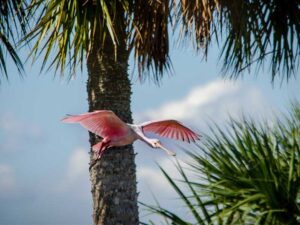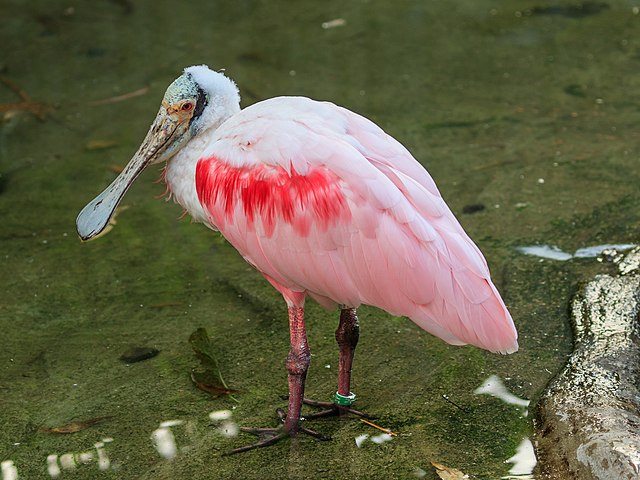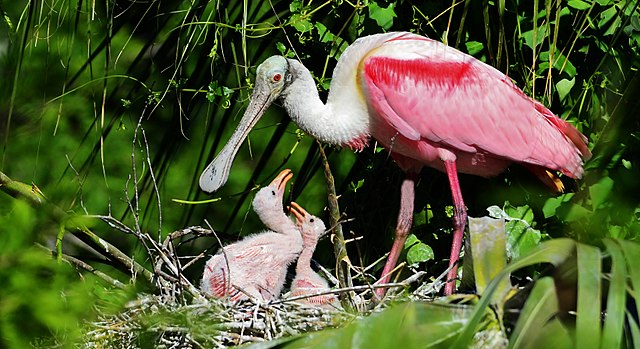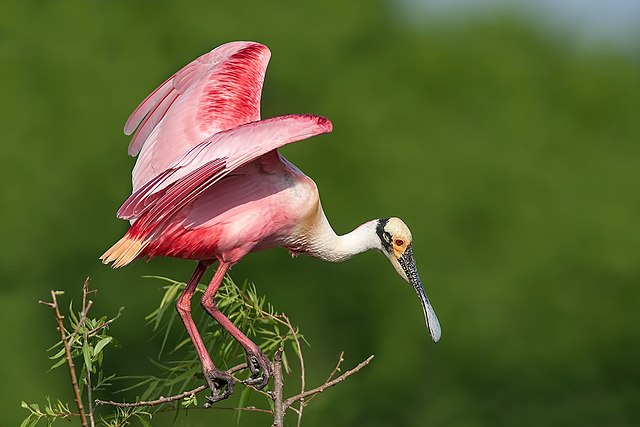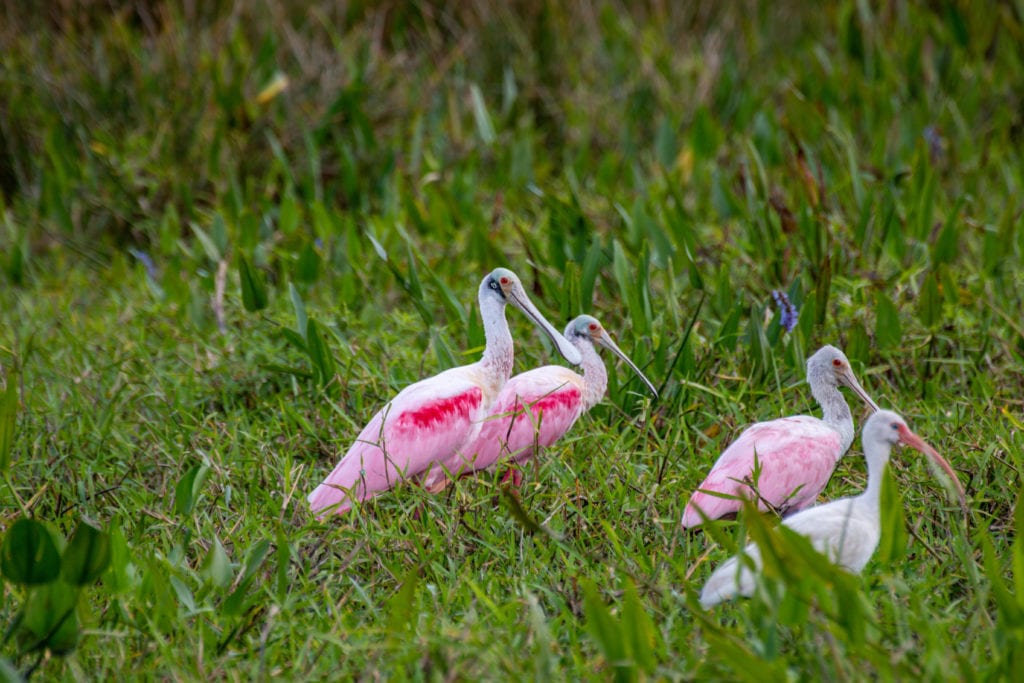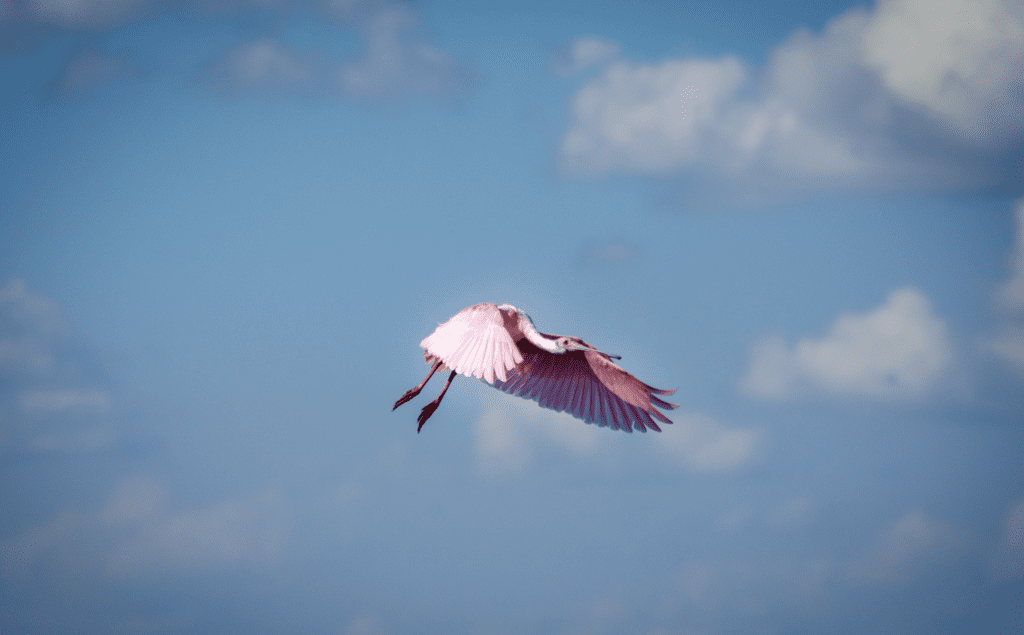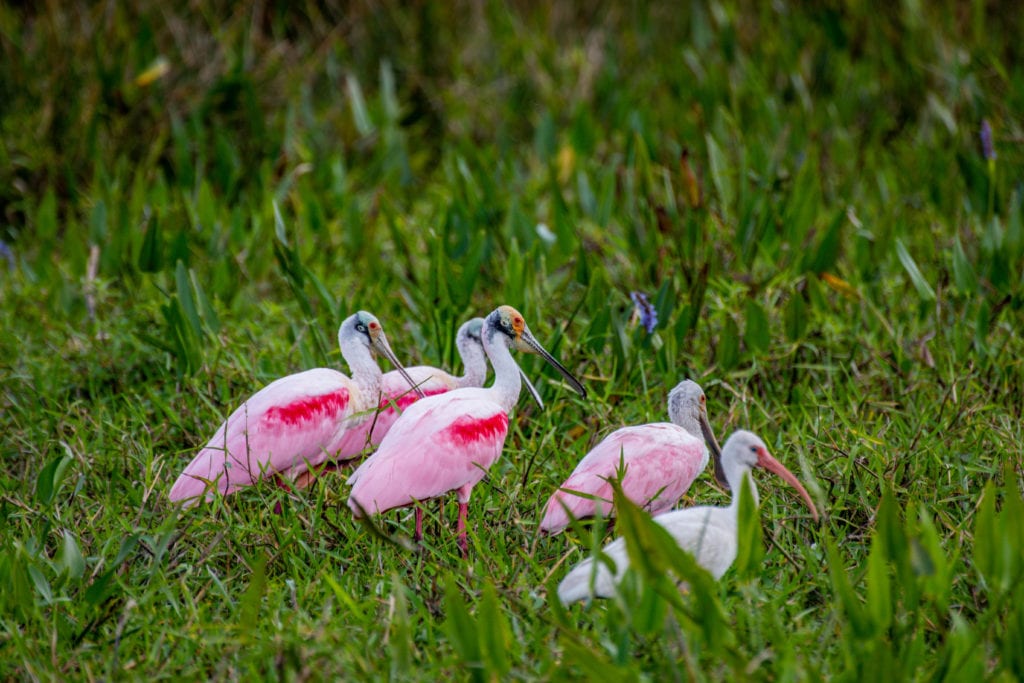Appearance:
A large pink wading bird, with a long spoon shaped bill. Adults have a brighter more vibrant share of pink and a bare yellowish green head.
The only other bird one could mistake a Roseate spoonbill for would be the American flamingo. The Roseate spoonbill is more common in south Florida than the American flamingo, the two species are closely related.
Juveniles appear the same as adults but are much paler pink with a fully feathered head. (STC_0188)
Weight, & Size:
This species can reach a total length of 30-40 inches with a wingspan of 50-54 inches
Adults weight between 2 and 3 pounds.
Diet:
The specialized bill has sensitive nerve endings which help the birds search for food in shallow water. The diet of the roseate spoonbill primarily consists of crayfish, shrimp, crabs, and small fish.
Behavior:
As the name implies, the roseate spoonbill also has a large, spoon-shaped bill, which it sweeps back and forth in shallow water to capture prey. (STC_0212)
During breeding season, the male uses gifts of nesting material to attract the female. Once mated, the pair remains monogamous. Both male and female take turns sitting on the eggs and feeding the young.
While feeding, spoonbills utter a low, guttural sound. They are also known to call during breeding displays and when flying.
A social bird, the roseate spoonbill often feeds, roosts and flies in formation with its species. They nest singly or in pairs, usually in trees over water and sometimes on small islands.
Reproduction:
Roseate spoonbills do not breed they reach the again of 3.
There is no sexual dimorphism (difference in form between individuals of different genders in the same species) in roseate spoonbills
They nest in mixed colonies (near other wading bird species) in mangroves or trees and though most breed on the coast, some nest inland. Nesting habitats include coastal mangroves and dredged-made islands.
The female builds the nest while the male retrieves the nesting materials. The female lays up to three whitish-colored eggs and both adults incubate the eggs for up to 24 days (Smithsonian National Zoological Park, n.d.). The young remain in the nest for approximately 35-42 days and are fed by both adults.
Geographic Range & Habitat:
The roseate spoonbill is found throughout the entire Gulf of Mexico coastline, certain regions in south and costal Florida in addition to Central America, South America, and the Caribbean. They prefer tropical and subtropical wetlands along with coastal mangroves and marshes.
Active research:
White-tail Facts:
Did you know?
- In the Florida Bay, the increased freshwater flows from Everglades restoration may positively affect prey availability and nesting success for the Roseate spoonbill.
- The oldest recorded Roseate Spoonbill was at least 15 years, 10 months old when it was recaptured and rereleased during a scientific study in Florida.
- The oldest recorded Roseate Spoonbill was at least 15 years, 10 months old when it was recaptured and rereleased during a scientific study in Florida.
- The Roseate Spoonbill is 1 of 6 species of spoonbills in the world and the only one found in the Americas
- Roseate Spoonbill chicks don’t have a spoon-shaped bill immediately after hatching. When they are 9 days old the bill starts to flatten, by 16 days it starts to look a bit more spoon like, and by 39 days it is nearly full size.
- The roseate spoonbill is a resident breeder in South America, generally east of the Andes, and coastal areas of Central America, the Caribbean, and the Gulf of Mexico
Taxonomy
- Class – Aves
- Order – Pelecaniformes
- Family – Threskiornithidae
- Genus – Platalea
- Species – ajaja
Species Status:
- Native
- Imperiled
Listing Status
- Federal Status –N/A
- FL Status – State Threatened Species
- Native


